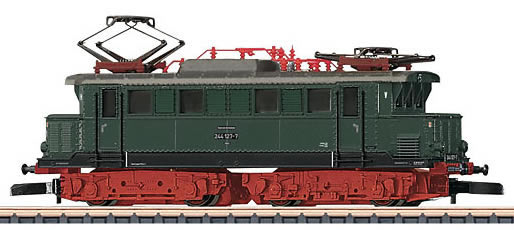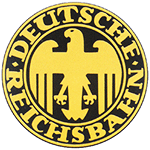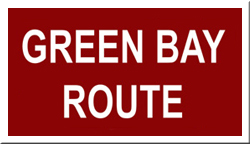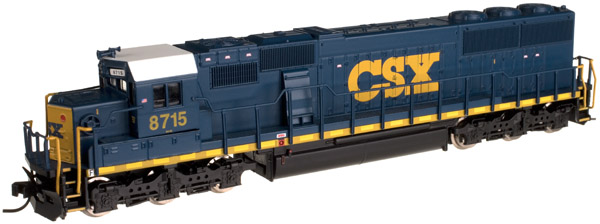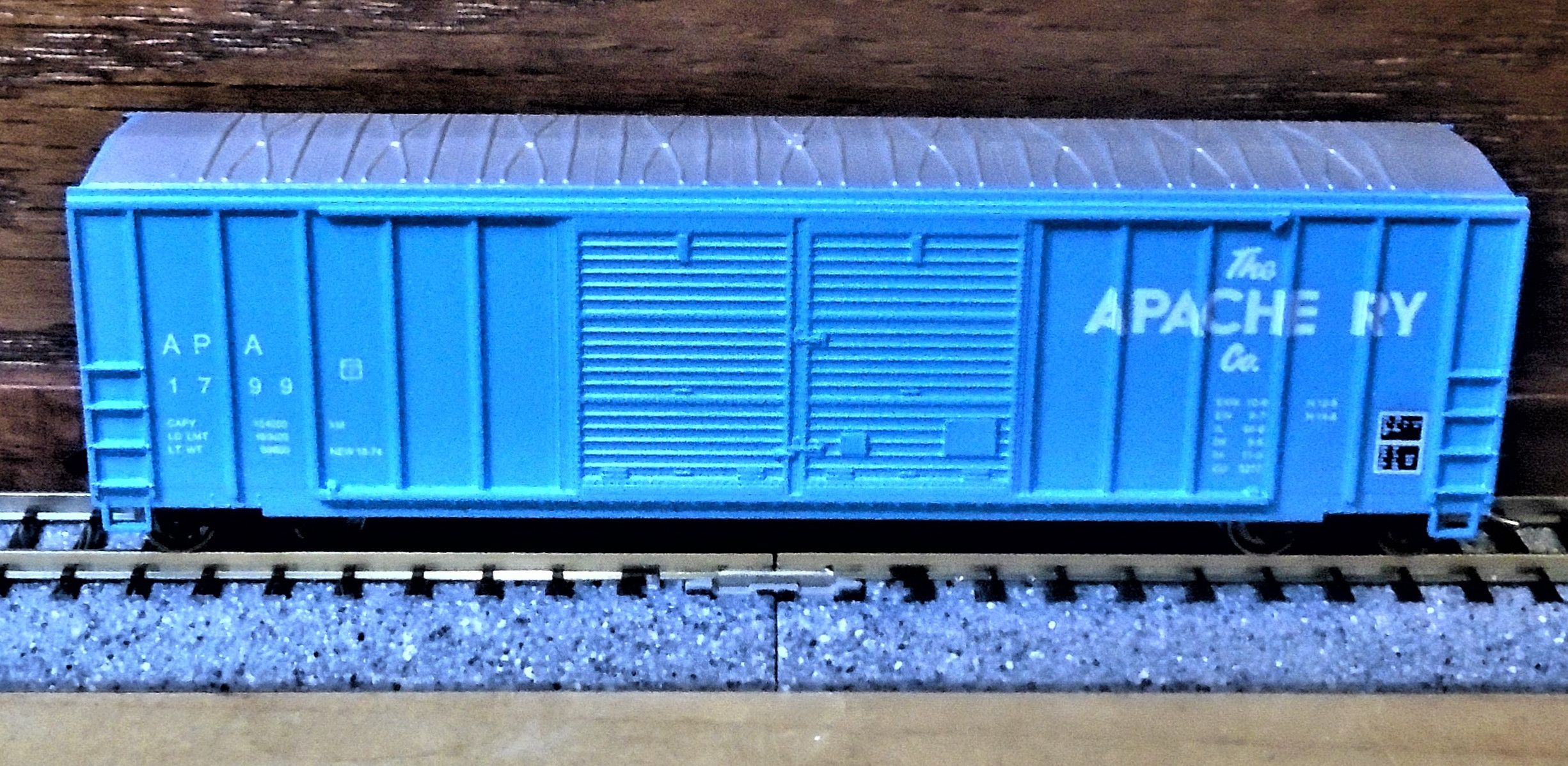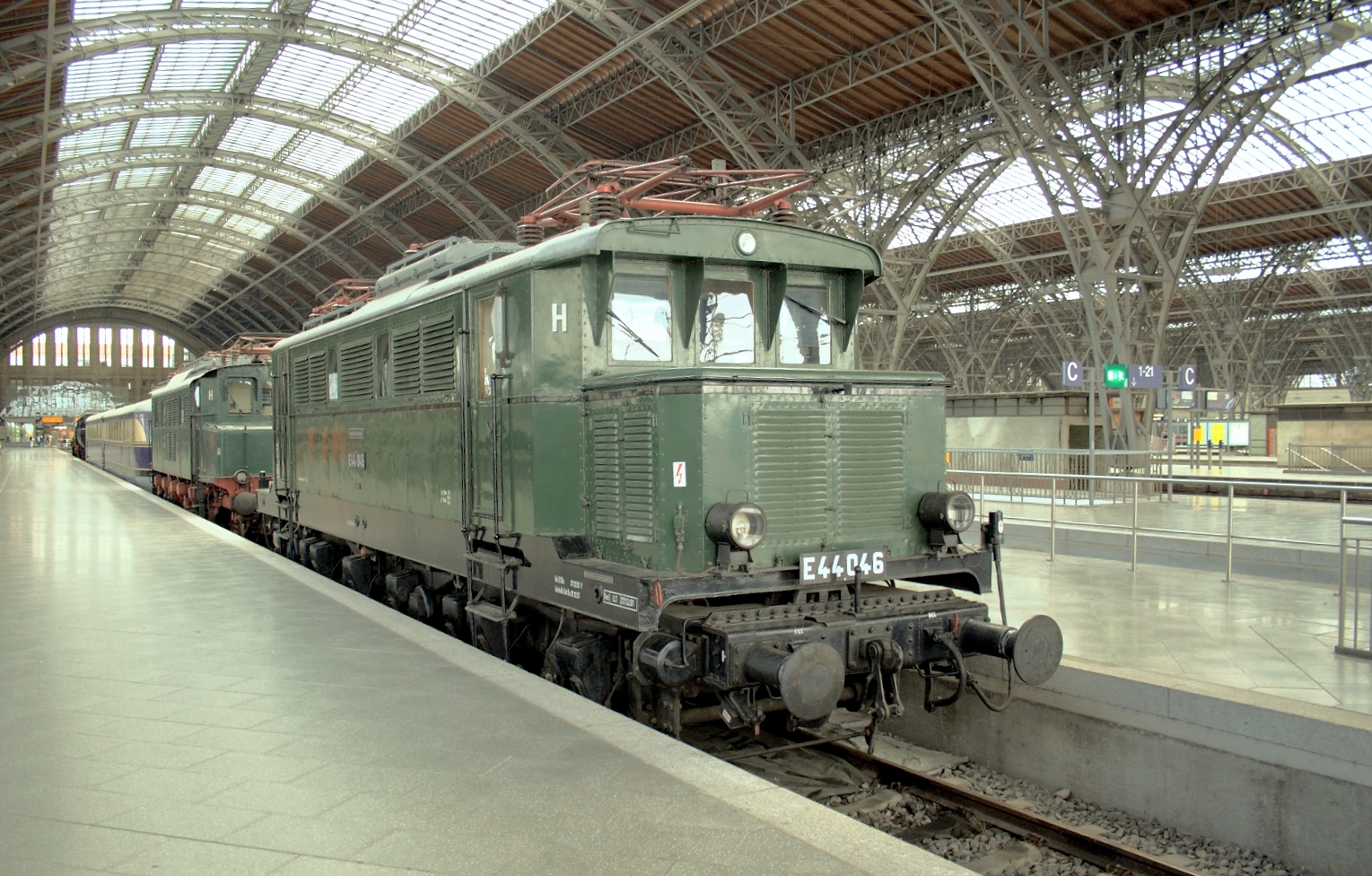Märklin - 88113 - Locomotive, Electric, E44 - Deutsche Reichsbahn
| Brand | Märklin |
| Stock Number | 88113 |
| Original Retail Price | 199.99€ |
| Manufacturer | Märklin |
| Body Style | Märklin Locomotive Electric E 44 |
| Prototype Vehicle | Locomotive, Electric, E44 (Details) |
| Road or Company Name | Deutsche Reichsbahn (Details) |
| Paint Color(s) | Green, Red, Black and Gray |
| Print Color(s) | White |
| Coupler Type | Marklin |
| Release Date | 2019-01-01 |
| Item Category | Locomotive |
| Model Type | Electric |
| Model Subtype | DRB |
| Model Variety | E 44 |
| Region | Europe |
| Prototype Era | EU Epoch II (1920 - 1945) |
| Years Produced | 1932 - 1945 |
Specific Item Information:
Model: This is an improved version compared to earlier models of this class. The locomotive has larger buffer plates. The catenary selector screw has been moved to inside the locomotive. The triple headlights are warm white LEDs and they change over with the direction of travel. Both trucks are powered. Length over the buffers 68 mm / 2-11/16".
Prototype History:
In Germany in the 1930s there was no money for new development of locomotives. Many senior folks in the rail industry were concerned they were rapidly falling behind the competition from other countries. Therefore, a group of companies developed three of their own prototype designs for electric locomotives, which were presented to the DRG. These companies were Wismar/SSW, BMAG/BEW and BMAG/MSW.
The new designs used a new technique of placing the traction motors in a so called "tram-hanging" design inside the bogies. This technique was already in use in Bavaria with some Bavarian electric locomotives like the E 73. Also, in Austria this technique had been in use since 1923 with much success. The base concept of all three prototype locomotives was the same, but between the prototypes there were many differences. The most successful design went into mass production as the E44 and went into service in 1934.
In the fifties and begin sixties the locomotives were in service in the long-distance trains, mainly in Southern Germany. The locomotives were renumbered to class BR 144 from 1968. In Western Germany the locomotives were taken out of service in 1984.
The new designs used a new technique of placing the traction motors in a so called "tram-hanging" design inside the bogies. This technique was already in use in Bavaria with some Bavarian electric locomotives like the E 73. Also, in Austria this technique had been in use since 1923 with much success. The base concept of all three prototype locomotives was the same, but between the prototypes there were many differences. The most successful design went into mass production as the E44 and went into service in 1934.
In the fifties and begin sixties the locomotives were in service in the long-distance trains, mainly in Southern Germany. The locomotives were renumbered to class BR 144 from 1968. In Western Germany the locomotives were taken out of service in 1984.
Road Name History:
The Deutsche Reichsbahn, also known as the German Reich Railway or the German Imperial Railway, was the name of the German national railway created from the railways of the individual states of the German Empire following the end of World War I.
The company was founded in 1920 as the Deutsche Reichseisenbahnen when the Weimar Republic, formally known as Deutsches Reich (German Reich, hence the usage of the Reich in the name of the railway), took national control of the German railways, which had previously been run by the German states. In 1924 it was reorganised under the aegis of the Deutsche Reichsbahn-Gesellschaft (DRG), a nominally private railway company, which was 100% owned by the German state. In 1937 the railway was reorganised again as a state authority and given the name Deutsche Reichsbahn (DRB). After the Anschluss in 1938 the DR also took over the Bundesbahn Osterreich (BBO, Federal Railway of Austria).
The East and West German states were founded in 1949. East Germany took over the control of the DR on its territory and continued to use the traditional name Deutsche Reichsbahn, while the railway in West Germany became the Deutsche Bundesbahn (DB, German Federal Railway). The Austrian Osterreichische Bundesbahnen (OBB, Austrian Federal Railways) was founded in 1945, and was given its present name in 1947.
In January 1994, following the German union, the East German Deutsche Reichsbahn merged with the West German Deutsche Bundesbahn to form Germany's new national carrier, Deutsche Bahn AG, technically no longer a government agency but still a 100% state-owned joint stock company.
The company was founded in 1920 as the Deutsche Reichseisenbahnen when the Weimar Republic, formally known as Deutsches Reich (German Reich, hence the usage of the Reich in the name of the railway), took national control of the German railways, which had previously been run by the German states. In 1924 it was reorganised under the aegis of the Deutsche Reichsbahn-Gesellschaft (DRG), a nominally private railway company, which was 100% owned by the German state. In 1937 the railway was reorganised again as a state authority and given the name Deutsche Reichsbahn (DRB). After the Anschluss in 1938 the DR also took over the Bundesbahn Osterreich (BBO, Federal Railway of Austria).
The East and West German states were founded in 1949. East Germany took over the control of the DR on its territory and continued to use the traditional name Deutsche Reichsbahn, while the railway in West Germany became the Deutsche Bundesbahn (DB, German Federal Railway). The Austrian Osterreichische Bundesbahnen (OBB, Austrian Federal Railways) was founded in 1945, and was given its present name in 1947.
In January 1994, following the German union, the East German Deutsche Reichsbahn merged with the West German Deutsche Bundesbahn to form Germany's new national carrier, Deutsche Bahn AG, technically no longer a government agency but still a 100% state-owned joint stock company.
Brand/Importer Information:
 Gebr. Märklin & Cie. GmbH or Märklin (MÄRKLIN or MAERKLIN in capital letters) is a German toy company. The company was founded in 1859 and is based at Göppingen in Baden-Württemberg. Although it originally specialized in doll house accessories, today it is best known for model railways and technical toys. In some parts of Germany and in Sweden, the company's name is almost synonymous with model railroads.
Gebr. Märklin & Cie. GmbH or Märklin (MÄRKLIN or MAERKLIN in capital letters) is a German toy company. The company was founded in 1859 and is based at Göppingen in Baden-Württemberg. Although it originally specialized in doll house accessories, today it is best known for model railways and technical toys. In some parts of Germany and in Sweden, the company's name is almost synonymous with model railroads.
Märklin introduced Z Scale in 1972. Connoisseurs appreciate Märklin Z as much as the most inveterate modeler: The charm of these finely constructed gems is best seen in the smallest of space. Because, this scale with all kinds of precision translated into 1:220 scale awaits you with almost unlimited operating enjoyment. It doesn't get any better.

Märklin introduced Z Scale in 1972. Connoisseurs appreciate Märklin Z as much as the most inveterate modeler: The charm of these finely constructed gems is best seen in the smallest of space. Because, this scale with all kinds of precision translated into 1:220 scale awaits you with almost unlimited operating enjoyment. It doesn't get any better.
Item created by: gdm
on 2019-05-24 12:19:14
If you see errors or missing data in this entry, please feel free to log in and edit it. Anyone with a Gmail account can log in instantly.
If you see errors or missing data in this entry, please feel free to log in and edit it. Anyone with a Gmail account can log in instantly.


